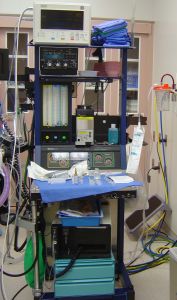 |
The introduction Blog of this series Workers Compensation Fraud outlined the fact that work comp fraud is often an organized crime committed by workers, health care providers and employers. This Blog outlines some of the red flags an employee or claimant is committing fraud.
An injured worker collecting benefits would be called the workers compensation Claimant. This is where the fraud starts and this is what most people understand as fraud. Claimant fraud takes place when an employee knowingly lies or exaggerates a situation in order to collect benefits. Other ways an employee might commit fraud is to claim an injury is work-related when it isn’t or secretly continuing to work while collecting benefits.
While there isn’t any fool proof way to identify fraud there are red flags. Employers or concerned citizens should report suspected fraud if two or more of the following
Red Flags for Workers’ Compensation Fraud are noticed:
- Upset, dissatisfied or disgruntled employee. Claimants with a motive to create fabricated the claim. Denied vacation time, demoted, laid off or fired.
- Claims made for accidents or incidents occurring immediately before a strike, layoff, business closure, completion or termination of a job or position.
- Injured worker files a worker’s compensation while in line for early retirement.
- The injured employee is difficult to contact. Calls to the home are not answered or the claimant is reportable sleeping or can’t be disturbed. These employees could be working at a different job at the same time they collect benefits. This is called “double-dipping,” and in most states is considered fraud.
- Newly hired employees. Statistics indicate the newer an employee is, the greater chance a claim maybe fraudulent. This is a major red-flag for an organized crime operation.
- No witnesses to the alleged accident. Employers need to keep careful records of reported injuries when there are, no witnesses. This is even more important when the employee’s responsibilities generally don’t require working alone.
- Changing stories or varied accounts of accident. When the claimant describes an accident differently to the employer and the doctor, or witnesses.
- The injured worker isn’t able to remember the date, time or specific place of the accident. Or the specific details about the injury. Employees may offer speculative scenarios or elaborated details.
- Monday and Friday accidents should be considered suspicion, especially when other red flags are noticed.
- When the number of days worked or the amount of salary inconsistent with the occupation. The injured worker may dispute the average weekly wage and claim additional income such as per Diem, commissions, tops and/or 1099 income.
- Claim paperwork with cross-outs, white-outs and erasures.
- Injured workers who file for benefits in a different state other where the alleged industrial injury or occupational disease took place. Or the worker’s address is in a completely different location of the employer.
- Claimants who file for benefits shortly before moving out of state or country.
- The listed occupation is inconsistent with an employer’s stated business. Or injuries that are not consistent with the nature of the business.
- An injured worker seen with calluses on hands, grease under fingernails. Or signs of continuing activities which would be impossible given the stated injury.
- Claimants starting their own business, or interested in self employment.
- Injured worker delays or refuses medical and diagnostic procedures to confirm injury.
- Unseen or injuries which can’t be proven by diagnostic or medical evidence. Moving or changing symptoms of pain or soft tissue injuries.
- Diagnostic tests with differing results.
- Failure to report am injury in a timely or immediate manner.
- Tips from coworkers, family or community members.
Glossary of Insurance Terms:
A | B | C | D | E | F | G | H | I | J-K | L | M | N | O | P | Q-R | S | T | U-V | W-Z
Families.com Blogs are for informational purposes only. Families.com assumes no responsibility for consumer choices. Consumers are reminded that it is their responsibility to research their choices properly and speak to a certified insurance professional prior to making any decision as important as an insurance purchase.
Photo credit for this blog entry:  (standard restrictions apply for use of this photo)
(standard restrictions apply for use of this photo)

